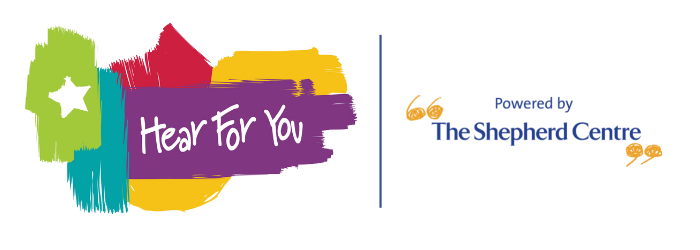
By David Brady- Director of Advocacy and Engagement
The COVID-19 pandemic has normalised mask wearing in a variety of contexts as a way of preventing the spread of the disease. Over the past few months it even became mandated by the NSW and ACT Governments due to the highly contagious Delta strain. This means teachers and high school students are required to wear masks inside and outside the classroom at all schools until health advice deems otherwise. The only exception is when students are eating or exercising. It is also strongly recommended that children in primary schools wear masks but it is not mandatory. For children and young people with hearing loss this will prove a massive barrier to their learning as they return to in-person schooling this month.
It will be a confronting and anxiety-inducing time for these students. Not only do masks restrict lipreading but they also limit the interpretation of mood and depth of the sound spoken for students who use Auslan. This presents a huge burden for any student with hearing loss to understand their teacher and to interact with their peers, placing them at an educational and social disadvantage.
School can already be a challenging environment for children with hearing loss. For example, during group work and discussion when sounds are coming from all across the room or outside in the playground when teachers and students communicate from afar. What are students with hearing loss meant to do during PDHPE when teachers are giving instructions from a distance while wearing a mask, or when peers choose to wear a mask at recess and lunch?
Like many graduates from Hear For You and The Shepherd Centre, our mentors have experienced firsthand how difficult learning and socialising is during the school years. For me, the FM system and notes provided by my teachers helped me to keep up with the learning pace of my hearing peers. However, as it is for many students with hearing loss, I also spent countless hours in the library searching for information I had missed in class. Teachers and peers wearing masks will undoubtedly lead to increased independent work and mental stress for students with hearing loss. While it will be hard and at times feel almost impossible, it is important that students with hearing loss know that they are not alone. There is support.
Considering all of this has led Hear For You and The Shepherd Centre staff and mentors to discuss possible solutions for students with hearing loss returning to school, taking into account the advice and experience we received from our online community. We suggest schools make the following amendments to the delivery of Term 4 2021 in order to effectively accommodate and support students with hearing loss.
Use the FM system more often
If you haven’t been using your FM system provided by Hearing Australia or Cochlear, it’s time to start! Myself and my colleagues with hearing loss remember how we used to limit our access to learning by sticking with just our hearing devices because we thought FM was uncool. However, FM has come a long way since then. FM’s today are highly adaptable and more discreet than the older clunky models of my day. If it is a disc or a microphone that picks up sound from nearby, it will work well in group work situations in the classroom and models with up to 30 metre range can be popped onto the lectern for you to hear during school assemblies. The main advice is you never know how much it can help you unless you give it a go and with teachers and students wearing masks there is no better time than now!
Captioning and video interpreting
Faster internet streaming brought about by 5G means captioning and access to Auslan video interpretation is closer to real-time than ever before. This gives students with hearing loss greater accessibility, flexibility and opportunity to receive information. Students, parents and teachers should check with their school authorities on accessing either 5G or the school wi-fi to access captioning or an Auslan video interpreter.
The most important reason for good wi-fi or 5G, along with good quality microphones, is clarity and speed. The better the clarity of speech, the better the captions or interpretation. The speed is also incredibly important because you don’t want to be playing catch-up in the classroom or school assembly. There is nothing more annoying than having people asking questions or laughing while you are waiting for the information to catch up! A good benchmark is 2-3 seconds after the spoken word to captions or interpreting.
With work and schooling moving online in the past two years there has been great progress made to the accuracy and speed of auto-captioning technology. While it is not 100% perfect, it is better than relying on hearing devices alone. This may be the way forward. After all, should there be a strange word, non-sentence, or something a deaf student does not understand, this is a great opportunity to seek clarification from the teacher or student if the device and FM does not pick it up. It is always ok to ask questions or to clarify a point, people with really good hearing ask questions all the time!
Auto-captioning may also work for group work as one can use a table microphone linked to your computer or tablet. Third-party captioning is an option too if you are not confident that auto-captions will be correct. It is so important that you have as close to 100% of the information as possible, with notes being recorded after class and polished up by the third-party captioner.
Projectors or laptops are also a smart way to provide captioning to all students in the class. This way any students who are struggling to understand information because of face masks and shields will be comforted and benefit from the extra communication aid of captioning. This could also be used for school assemblies. If you don’t know how to go about asking for this we advise you to ask your school’s information technology staff who may find improving accessibility for all students an exciting project. Remember- not everyone who LOVES captioning are deaf or have a hearing loss. It will help everyone!
Shields
Clear Perspex placed in front of the teacher at the front of the classroom would also enable all students to see and understand the teacher. However, this may present a challenge when the teacher is required to move among the class, attend to a student or respond to a question. In this instance the mask can be worn to protect the teacher and students, then when the teacher or student speaks, they can either return behind the shield or stand close to you and remove their mask while standing in front of you. It will be tricky for the teacher to position themselves, but a positive for the student with hearing loss is that the teacher’s increased awareness to be in front of you will force a habit and continue when face masks are removed forever.
Social conversations – take it outside
We know it is never going to be possible for one to use FM, captions or Auslan interpreters all the time to overcome face masks. This is when YOU will have to be BOLD and take charge of the situation in a positive fashion. If your friends are trying to communicate with you indoors where the school rules mean masks on, we encourage you to suggest taking the chat outside where masks can be taken off. Remember, as a deaf person it is legally ok for your friends at school to remove their masks to communicate to you, but if you have the option to go outside take it!
Patience – it will end
This challenge and barrier to learning is temporary and the classroom will soon return to what it was like before COVID-19. However, the silver lining for the student with hearing loss is the incorporation of communication support for everyone and teachers becoming better at supporting you. After all, access to education is a right and every student must be able to receive information equally.
If you have any other tips or suggestions please feel free to reach out to us on Facebook.


